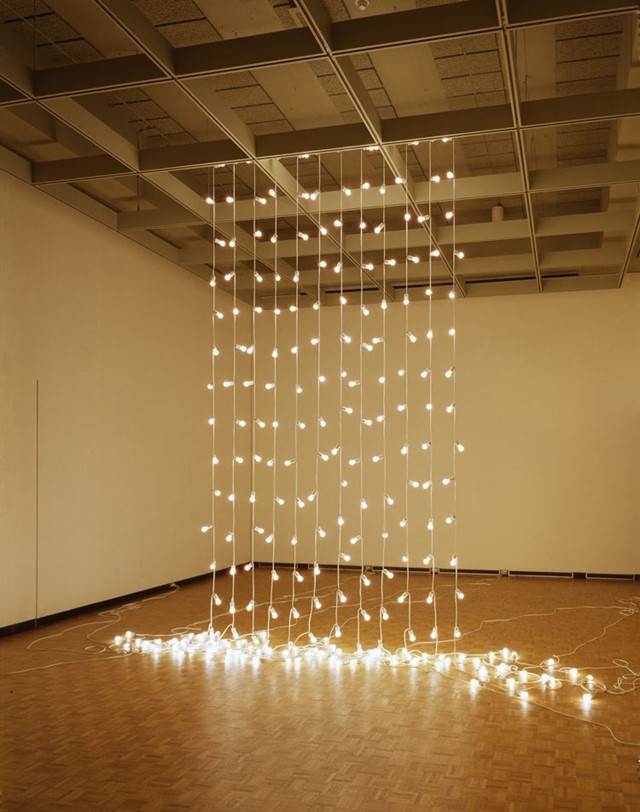As December 25th approaches and festive decorations go up in earnest, we examine their omnipresence across contemporary art, fashion and culture
Christmas lights hail from humble origins: they first festooned the indoor firs of early 20th-century German households as miniature candles, clinging to tree branches with tiny blobs of melted wax or delicate dress pins. Today, the ritual of stringing up festive displays of light is a yearly extravaganza, a global celebration of excess that can at times surpass the parameters of ‘good taste’ and enter into the realm of ‘naff’.
What exactly defines our cultural palates is indeed a question in and of itself, so on this occasion we’ll leave that debate for 2017. Instead, we consider five instances in which Christmas lights have become separated from their purpose as a means of decoration, and placed instead into a conceptual and creative context.
1. Felix Gonzalez-Torres, Untitled (North), 1993
Felix Gonzalez-Torres was an artist and activist whose work often centred upon contemplative installation as a comment on the AIDS crisis. His practice spoke in the visual language of minimalism – subtle upon first inspection when in actuality, Gonzalez-Torres’ politically and highly emotive oeuvre was imbued with resonance far beyond a formal aesthetic. The use of electrical light sources in his work represents the finite life span of a human being, and in the Untitled (North) installation frosted light bulbs are suspended in a linear formation, the cords cascading onto the floor, intertwining like lovers in a final embrace.
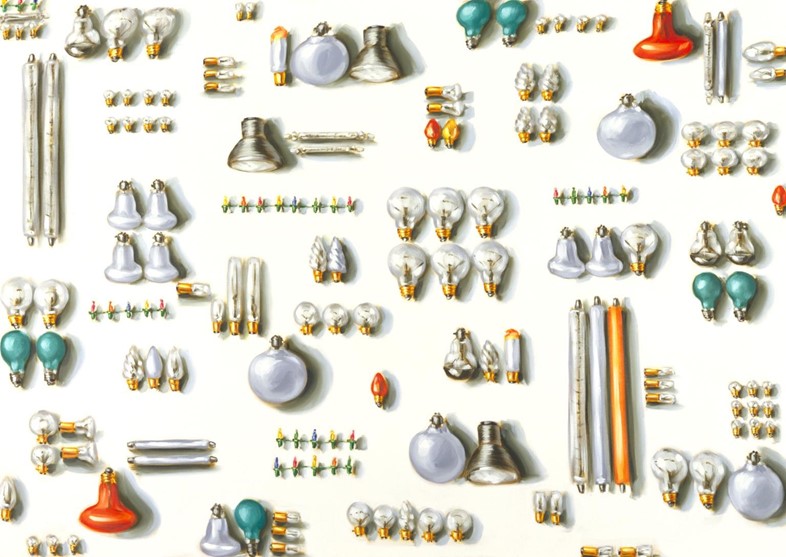
2. Lisa Milroy, Light Bulbs, 1988
Drawing comparisons to the likes of Jasper Johns and Wayne Thiebaud – artists both associated with the Pop Art movement – Lisa Milroy’s work speaks in the language of the everyday, with her oil on canvas paintings featuring commonplace objects such as shoes, vases or stamps arranged into grids or scattered into patterns. Painted from memory, Milroy’s depiction of light bulbs in her piece from 1988 muses on the clinical nature of mass production, removing the bulbs from their original function and depicting them as lifeless relics from a society obsessed with stuff.
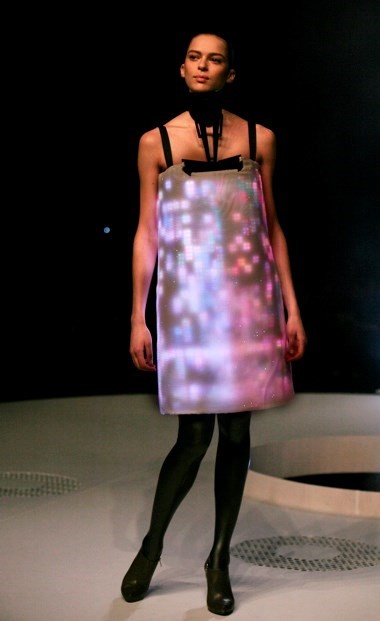
3. Hussein Chalayan, LED Dress, A/W07
There are few designers who stretch the boundaries of fashion, product design and conceptual art further than Hussein Chalayan. Holding a particular fascination with wearable technology, Chalayan notoriously created a remote controlled dress for his S/S00 collection, subsequently designing similar robotic garments for S/S07 in collaboration with engineer Moritz Waldemeyer. The A/W07 show, titled Airborne, opened and closed with two dresses crafted from 15,000 LED lights embedded behind a gauze of fabric, resembling a pixelated screen displaying the changes of the seasons. The first represented the arrival of spring and the second of summer, exploring their association with one another and their life and death cycles.
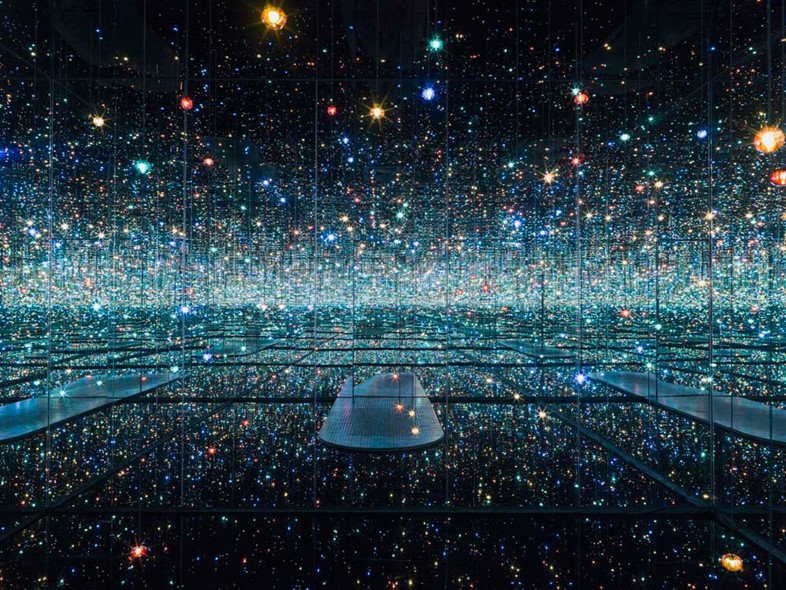
4. Yayoi Kusama, Infinity Mirrored Room – The Souls of Millions of Light Years Away, 2013
Yayoi Kusama’s all-consuming fascination with the concept of infinity and insanity is exemplified in the abundant use of the polka dot as a motif within her practice. Since 1963, Kusama has created mirror-lined chambers as an expression of her interest in never-ending vision and the immeasurable realms of imagination, as with her 2013 installation consisting of limitless constellations of tiny speckles of light. As the artist mused: “My life, a dot: that is, one of a million particles. A white net of nothingness composed of an astronomical aggregation of connected dots will obliterate me and others, and the whole of the universe.”
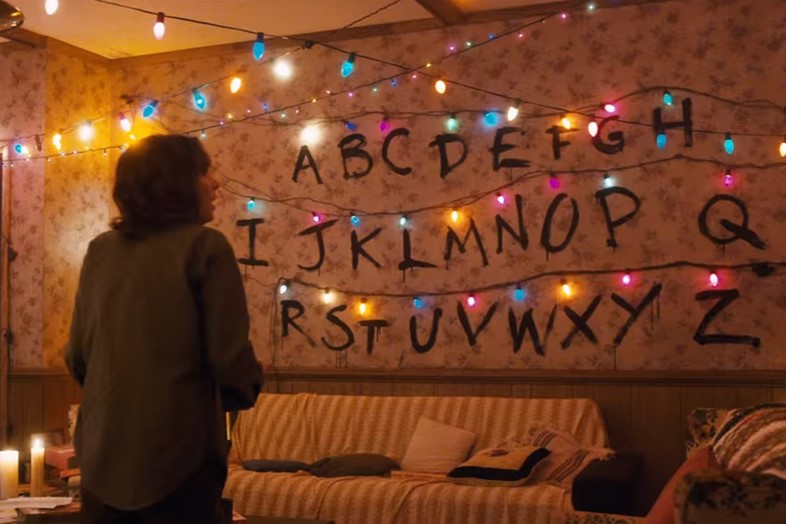
5. Joyce Byers, Stranger Things, 2016
The image of Winona Ryder hysterically conversing with Christmas lights is a pervasive emblem of the Netflix series Stranger Things, which reached indubitable pop-culture phenomenon status over the summer. In summary, Ryder plays single mother Joyce Byers, whose son Will has been taken by a mysterious entity to a parallel universe ominously named ‘The Upside-Down’. Believing that Will can communicate via the power of electricity, she purchases reams of Christmas decorations, paints Ouija board letters on her living room wall and speaks to the lights in a desperate attempt to reach her missing son.
